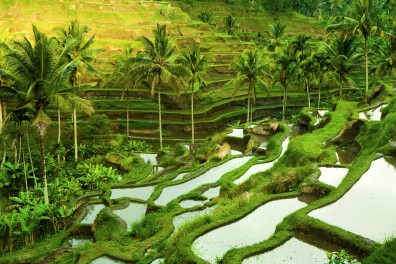In several regions including Central and South America, as well as Asia, IWRM is explicitly shown to be part of the adaptation experience.
“GWP´s programmes such as the Water, Climate and Development Programme (WACDEP), which is now being implemented across the GWP Network, can help people to adapt faster and reduce their risks of losses and harm from climate-related disasters such as floods and droughts,” says Dr. Grobicki.
The report states that the adaptation experience is accumulating across regions in the public and private sector and within communities. Governments at various levels are starting to develop adaptation plans and policies and to integrate climate-change considerations into broader development plans. Examples of adaptation across regions include the following:
In Africa, most national governments are initiating governance systems for adaptation. Disaster risk management, adjustments in technologies and infrastructure, ecosystem-based approaches, basic public health measures, and livelihood diversification are reducing vulnerability, although efforts to date tend to be isolated.
In Europe, adaptation policy has been developed across all levels of government, with some adaptation planning integrated into coastal and water management, into environmental protection and land planning, and into disaster risk management.
In Asia, adaptation is being facilitated in some areas through mainstreaming climate adaptation action into subnational development planning, early warning systems, integrated water resources management, agroforestry, and coastal reforestation of mangroves.
In Australasia, planning for sea-level rise, and in southern Australia for reduced water availability, is becoming adopted widely. Planning for sea-level rise has evolved considerably over the past two decades and shows a diversity of approaches, although its implementation remains piecemeal.
In North America, governments are engaging in incremental adaptation assessment and planning, particularly at the municipal level. Some proactive adaptation is occurring to protect longer-term investments in energy and public infrastructure.
In Central and South America, ecosystem-based adaptation including protected areas, conservation agreements, and community management of natural areas is occurring. Resilient crop varieties, climate forecasts, and integrated water resources management are being adopted within the agricultural sector in some areas.
In the Arctic, some communities have begun to deploy adaptive co-management strategies and communications infrastructure, combining traditional and scientific knowledge.
In small islands, which have diverse physical and human attributes, community-based adaptation has been shown to generate larger benefits when delivered in conjunction with other development activities.
Photo: Terraced rice fields in China.

